🌼 A Season of Return: Why I Plant Daffodils Every Year
There’s a quiet defiance in the daffodil.
It rises just as the world is still uncertain, the cold not quite gone, the air still tasting of winter’s hush. Yet there she is—a golden flare of hope, rising from cold ground without apology. When I plant daffodil bulbs in the fall, I’m not just gardening. I’m making a soft promise to my future self:
You will return.
You will bloom again.
Even after the long night.
As someone who’s found healing in the rhythm of tending soil and spirit, I see each daffodil as an archetype—a symbol of feminine power, soft strength, and radical joy.
Let me take your hand and walk you through all 13 RHS-recognized types of daffodils. Each is a whisper, a story, a metaphor waiting to root itself in your garden—and maybe in your heart.
🧡 1. Trumpet Daffodils
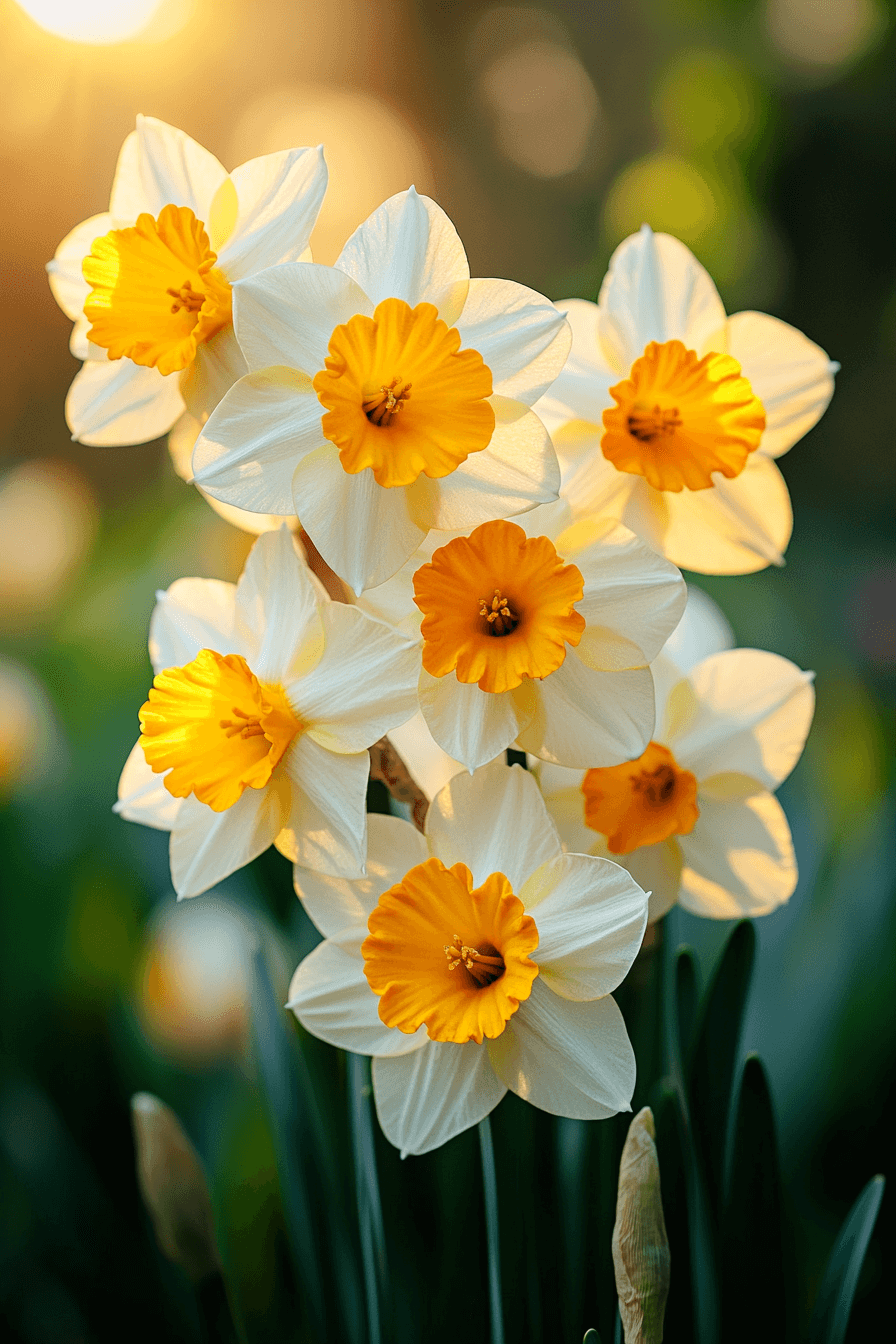
Key trait: Long, bold trumpets as long or longer than their petals.
Vibe: Leadership, presence, clarity.
Favorites: ‘Dutch Master’, ‘Mount Hood’
These are the matriarchs—steadfast, sun-seeking. I plant them near thresholds and doorways, where bold energy belongs.
Care tip: Provide full sun and well-drained soil. Remove spent flowers to encourage next year’s bloom, but keep foliage until fully yellowed.
💛 2. Large-Cupped Daffodils
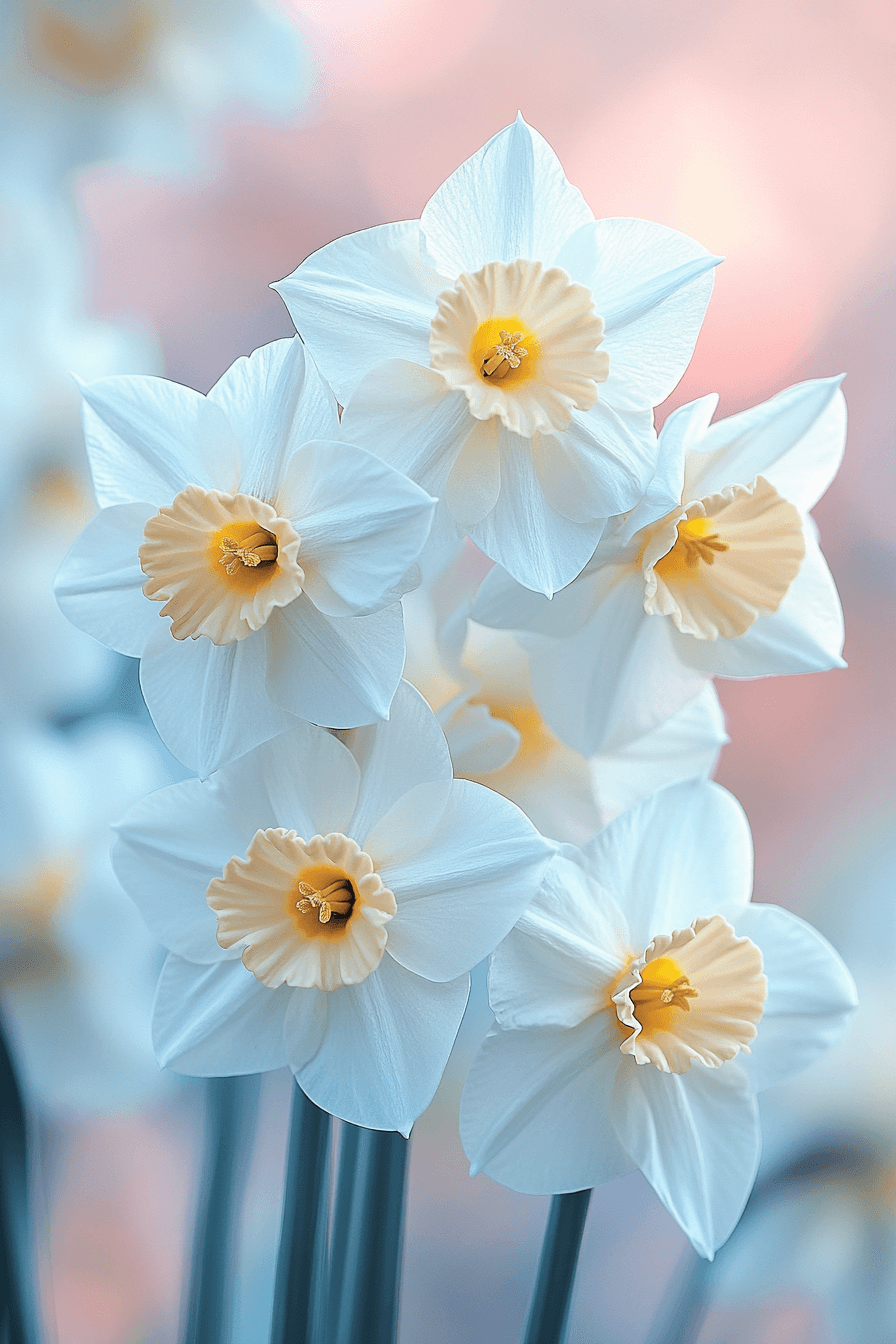
Key trait: Cups are over one-third but shorter than the petals.
Vibe: Soft confidence.
Favorites: ‘Salome’, ‘Ice Follies’
They remind me of the women who speak not to dominate but to steady the room with grace.
Care tip: Plant in groups for best visual impact. Water well during dry spells but avoid soggy soil.
🤍 3. Small-Cupped Daffodils
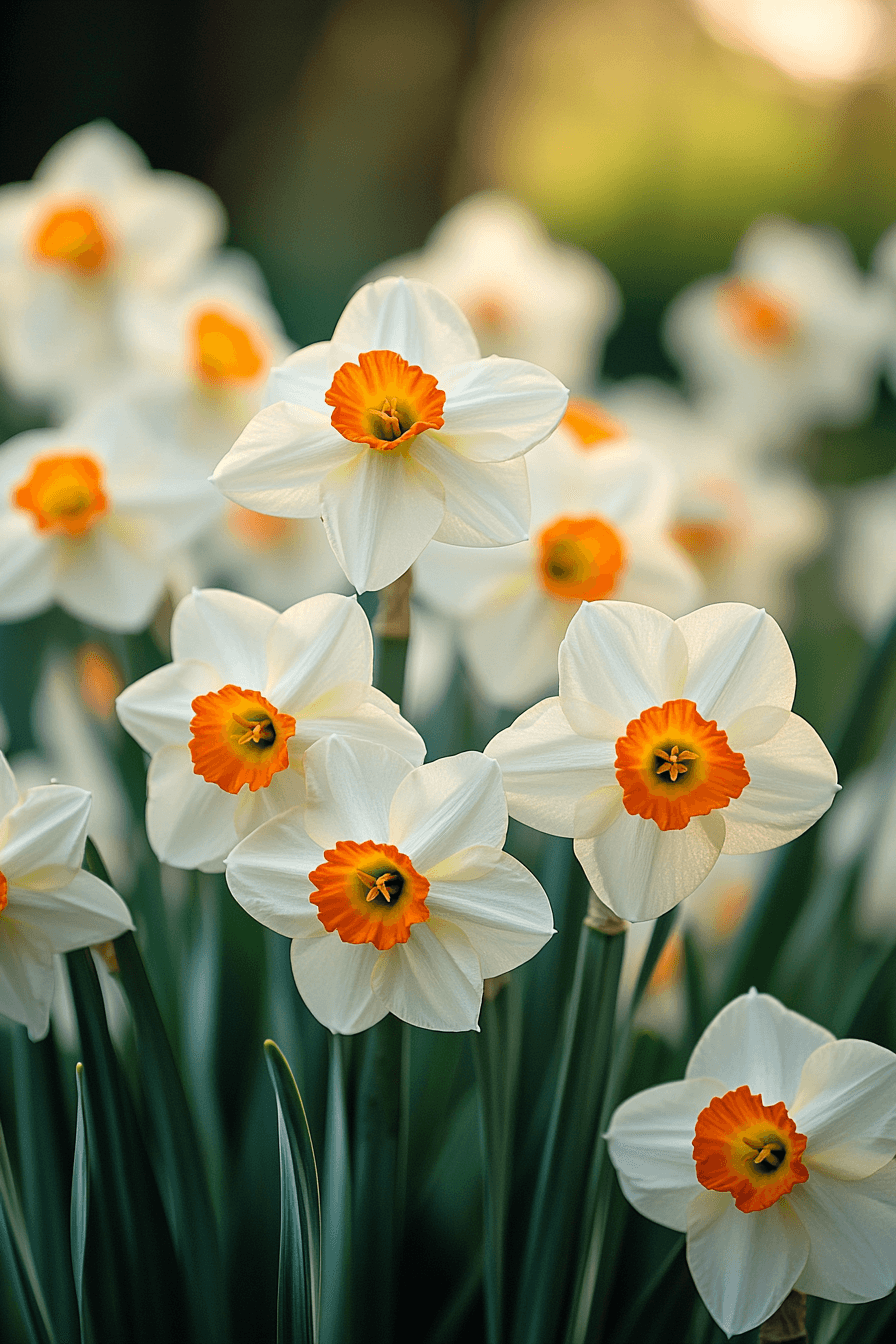
Key trait: Petite cups with understated beauty.
Vibe: Precision, elegance, restraint.
Favorites: ‘Dreamlight’, ‘Barrett Browning’
The kind of bloom that feels like a secret, kept and cherished.
Care tip: Prefers partial shade and humus-rich soil. Good companion for woodland gardens.
🩷 4. Double Daffodils
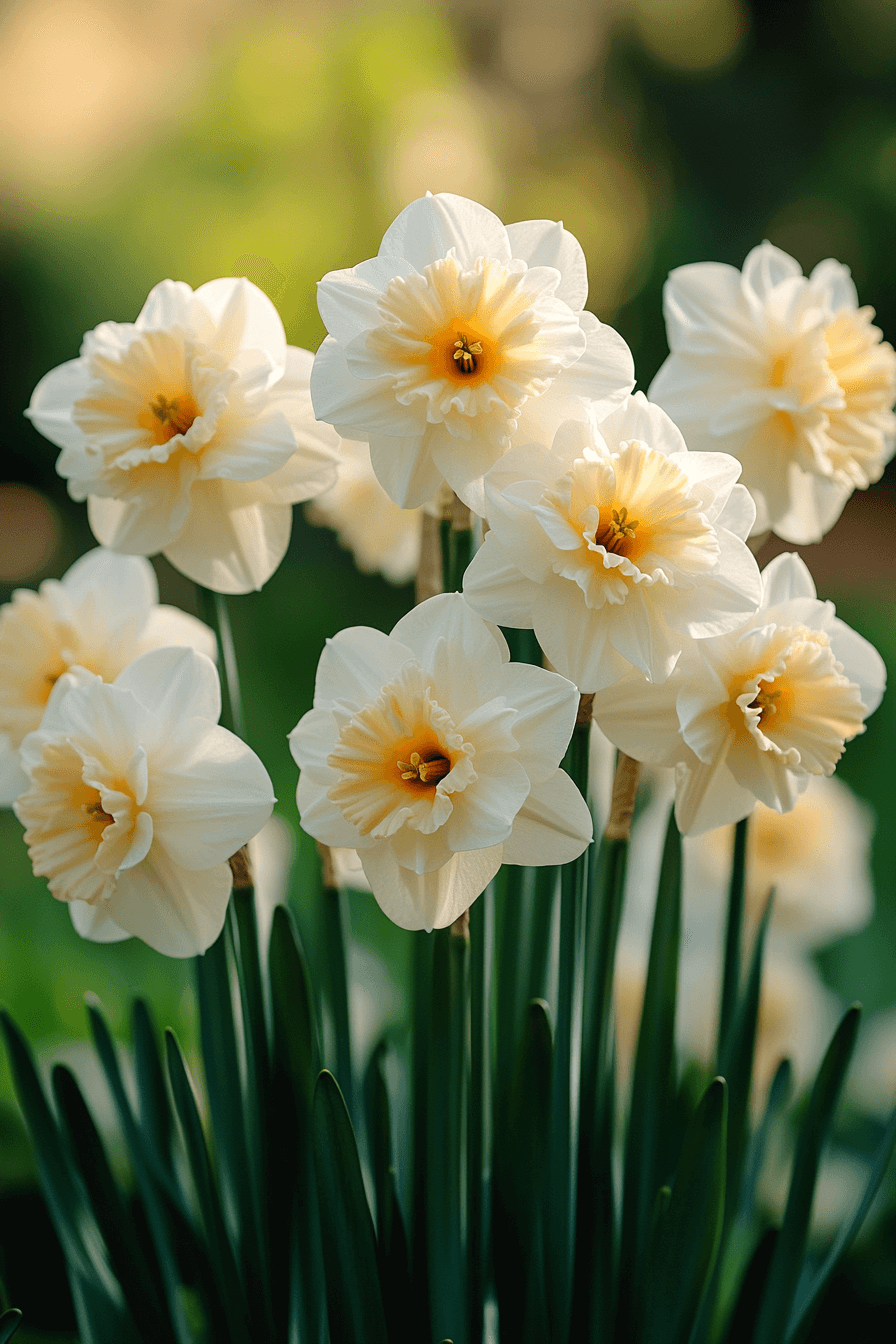
Key trait: Layers of petals and sometimes a frilled crown.
Vibe: Romance, complexity, depth.
Favorites: ‘Replete’, ‘Tahiti’
These daffodils mirror the inner worlds of women: multifaceted, unboxed, unapologetically whole.
Care tip: Double daffodils can be slower to naturalize—give them space and patience for best results.
🌙 5. Triandrus Daffodils
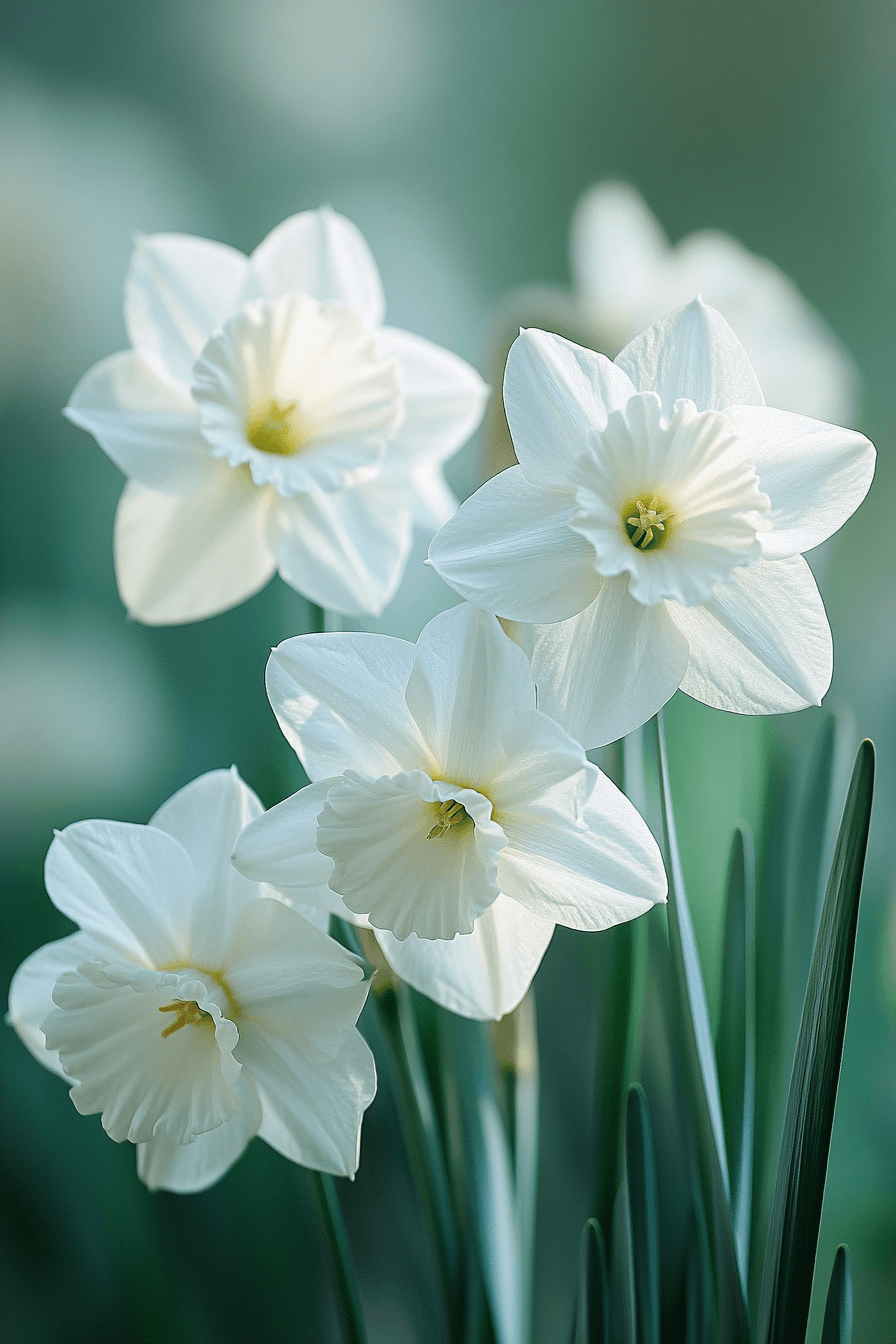
Key trait: Nodding flowers in clusters, often with translucent petals.
Vibe: Softness, surrender, grace.
Favorites: ‘Thalia’, ‘Petrel’
When you need gentleness, plant triandrus. They soothe the garden like lullabies.
Care tip: Prefers partial shade and moisture-retentive soil; protect from strong winds due to delicate stems.
☀️ 6. Cyclamineus Daffodils
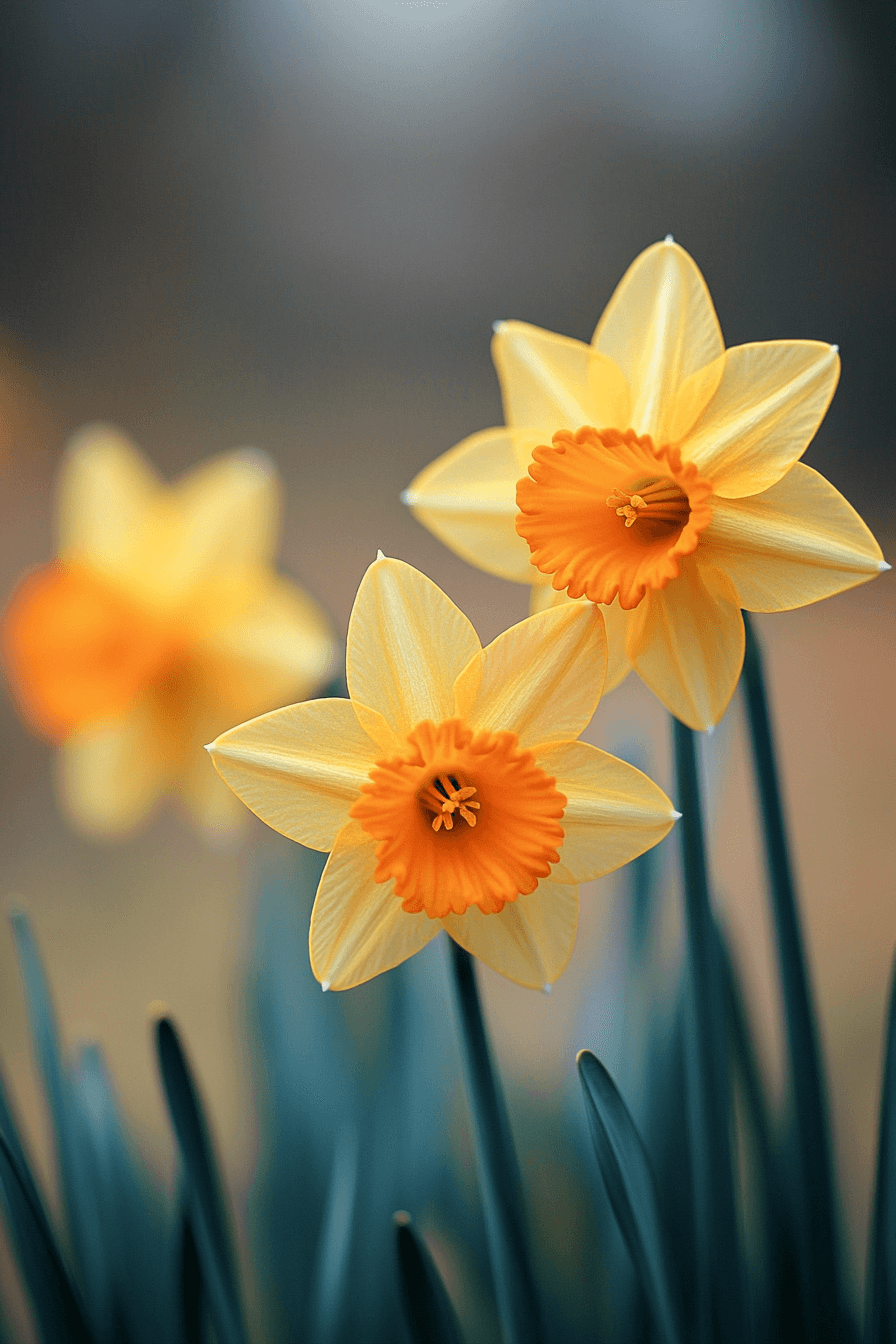
Key trait: Reflexed petals like windswept hair.
Vibe: Movement, energy, spontaneity.
Favorites: ‘Jetfire’, ‘February Gold’
Like my younger self—wild, bright, and running toward everything.
Care tip: Thrives in full sun; ensure good drainage to avoid bulb rot in wet winters.
🌾 7. Jonquilla Daffodils
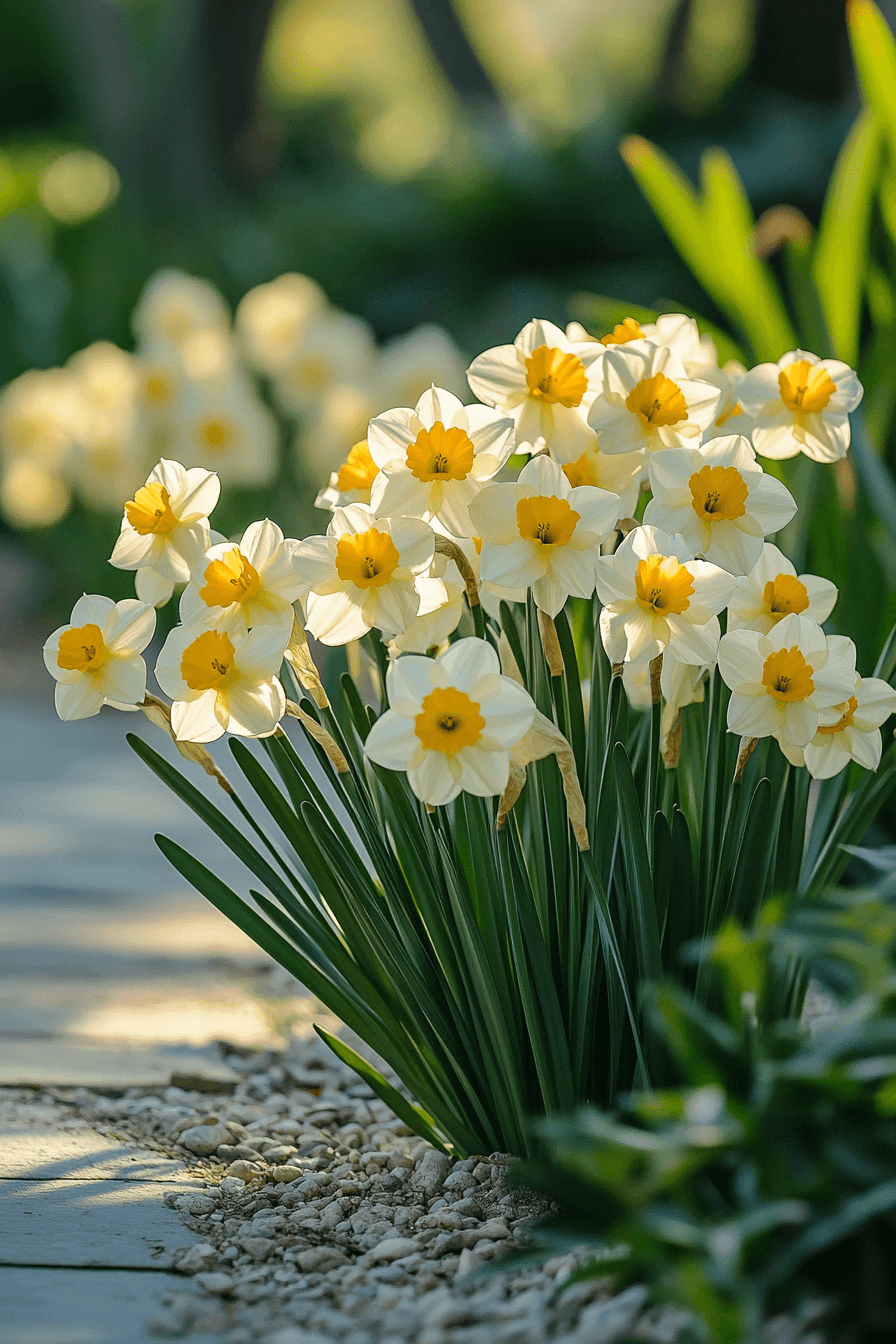
Key trait: Slender leaves, multiple fragrant blooms.
Vibe: Sweetness, sensuality, sunlight.
Favorites: ‘Baby Moon’, ‘Sweetness’
I leave them by the garden bench, where they share their perfume with still mornings.
Care tip: Jonquillas love rich soil and full sun; their scent is a reward for patient gardeners.
🌸 8. Tazetta Daffodils
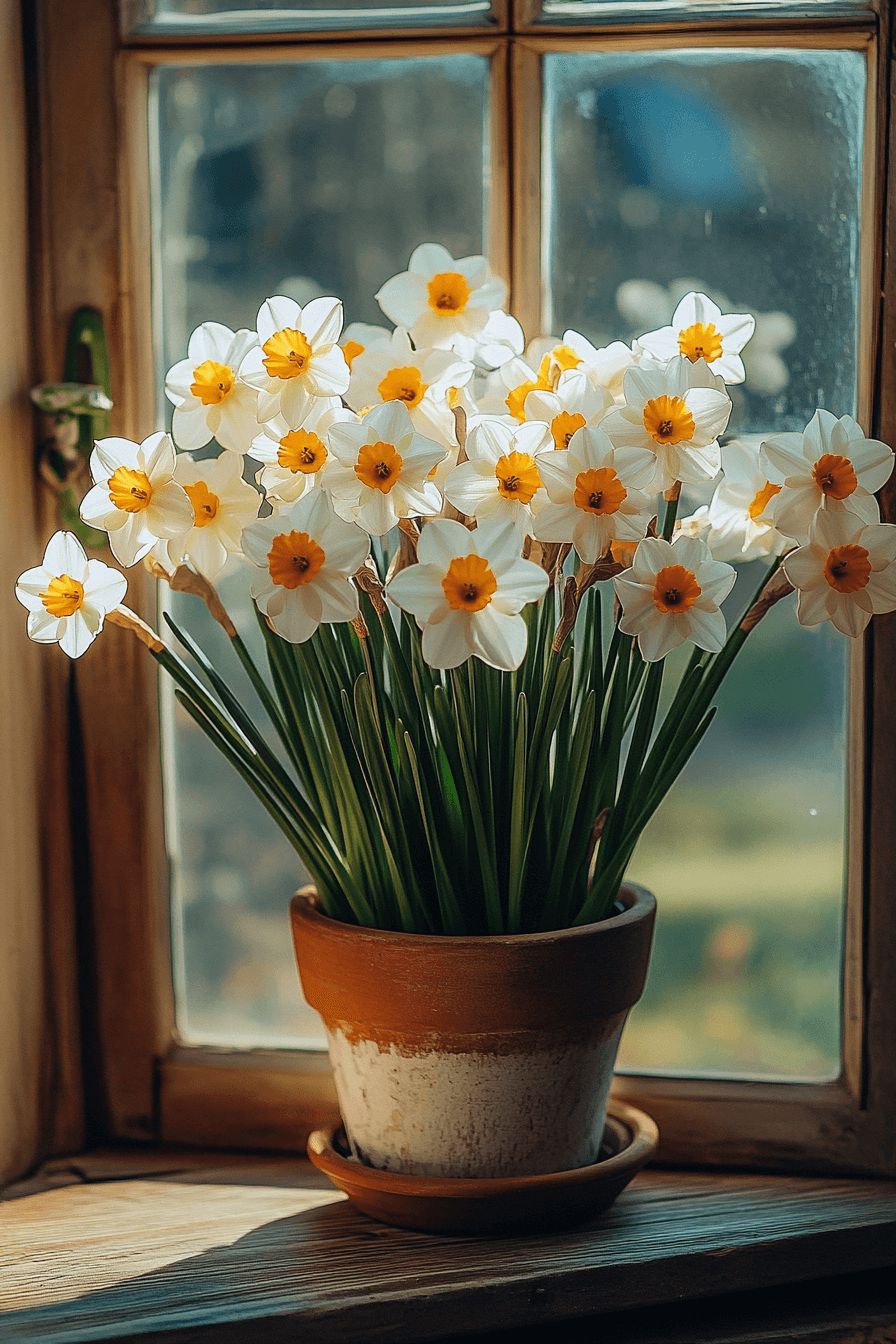
Key trait: Many small, clustered flowers.
Vibe: Inner light, social joy.
Favorites: ‘Geranium’, ‘Paperwhite’
They’re the ones that bloom indoors, midwinter, like candlelight. We need that.
Care tip: Perfect for indoor forcing; keep soil moist and bright but avoid direct hot sun.
🔮 9. Poeticus Daffodils
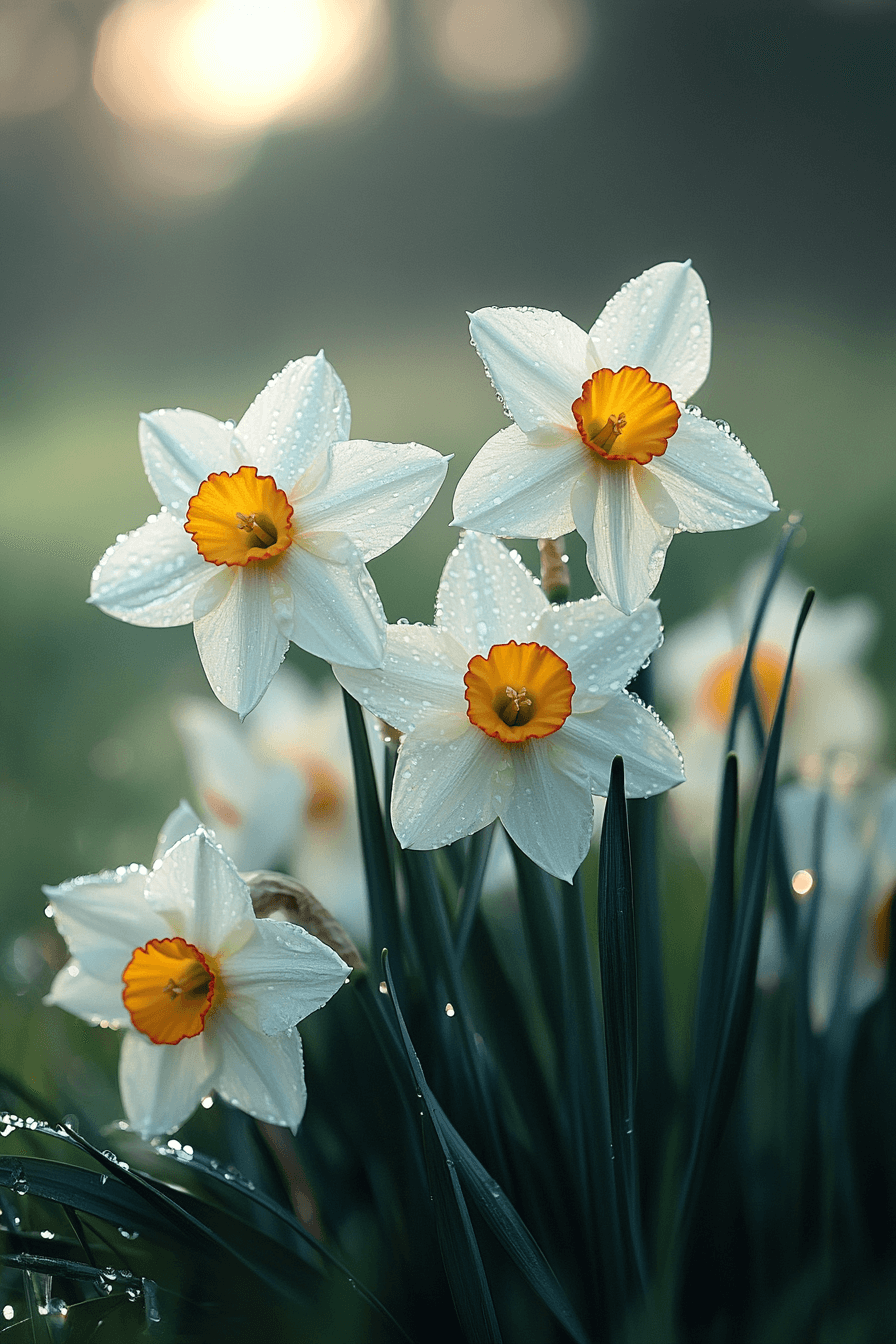
Key trait: Flat white petals, small colored cup—late bloomers.
Vibe: Intuition, mystery, legacy.
Favorites: ‘Actaea’, ‘Pheasant’s Eye’
They don’t bloom first, but they linger the longest—like the truth.
Care tip: Prefer well-drained soil and full sun; great for naturalizing in wildflower meadows.
🧁 10. Bulbocodium Daffodils
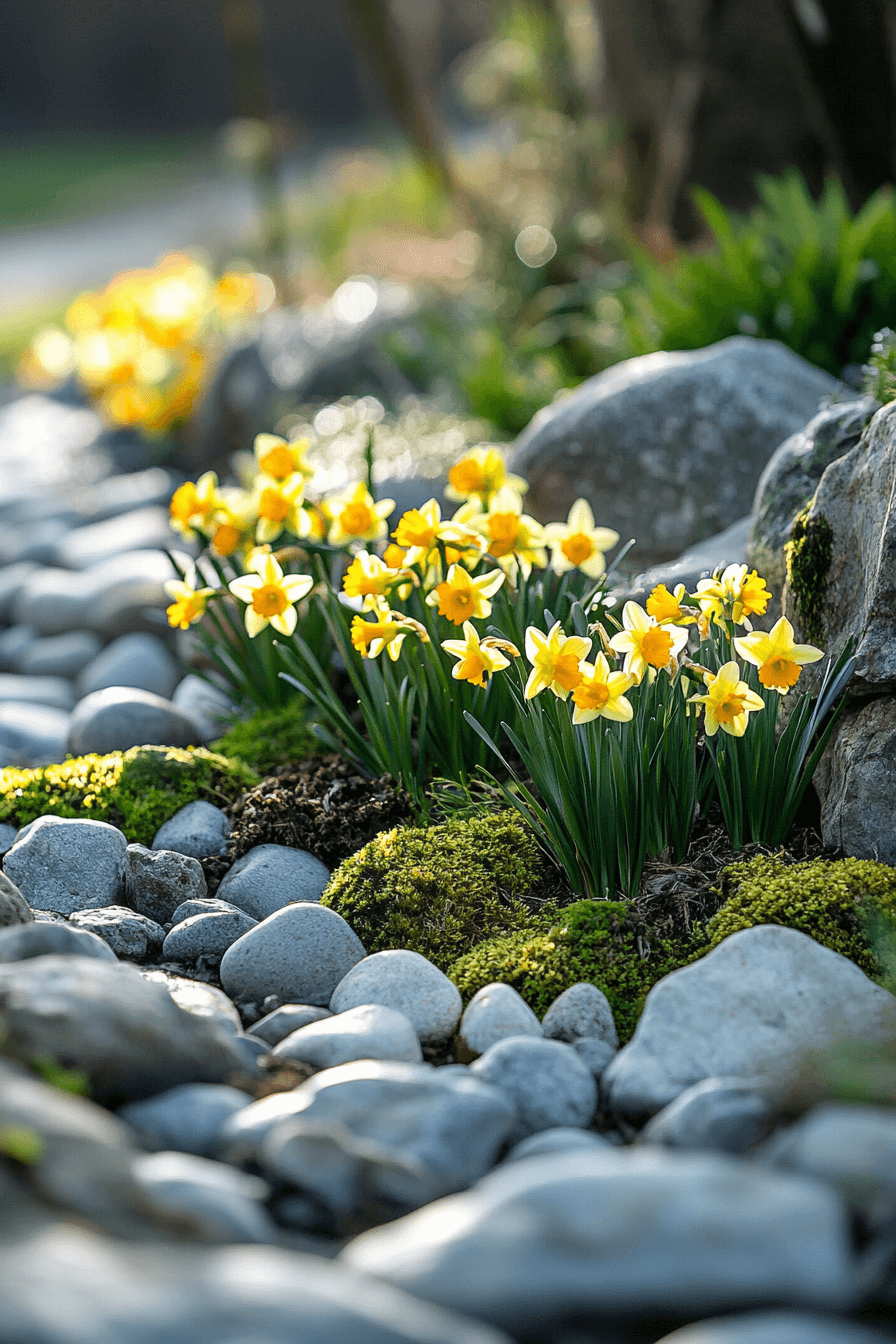
Key trait: Tiny blooms, large cup like a petticoat.
Vibe: Whimsy, surprise.
Favorites: ‘Golden Bells’
Perfect for rock gardens or hidden corners—like fairies that came to stay.
Care tip: Requires excellent drainage; avoid heavy clay soil and protect from excessive winter wetness.
🧵 11. Split-Corona Daffodils
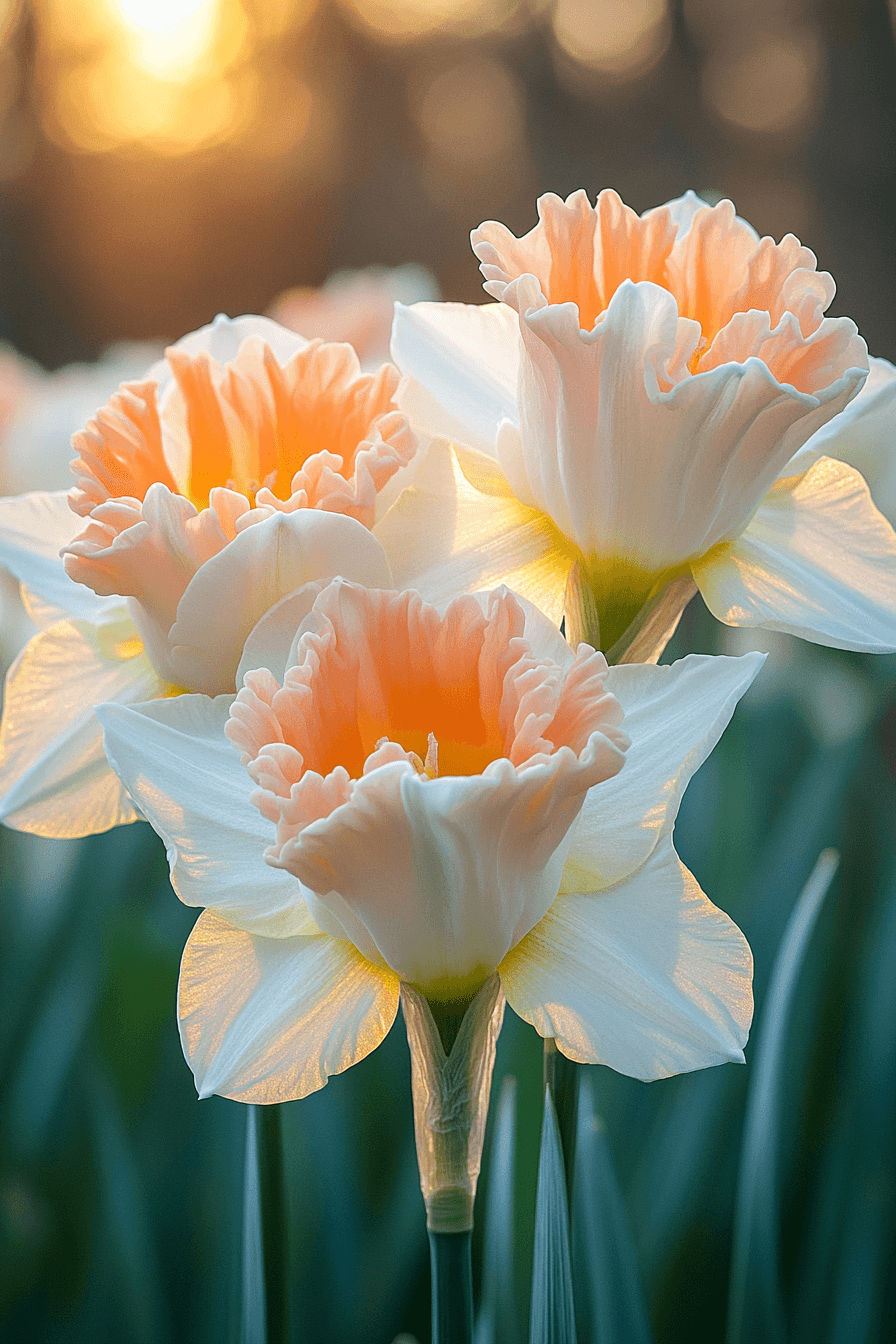
Key trait: Frilled or petal-like corona split into lobes.
Vibe: Rebellion, reinvention.
Favorites: ‘Cassata’, ‘Orangery’
I love these most when I feel like changing everything.
Care tip: Plant in well-drained soil with good sunlight; deadhead to maintain garden tidiness.
🍃 12. Miscellaneous Daffodils
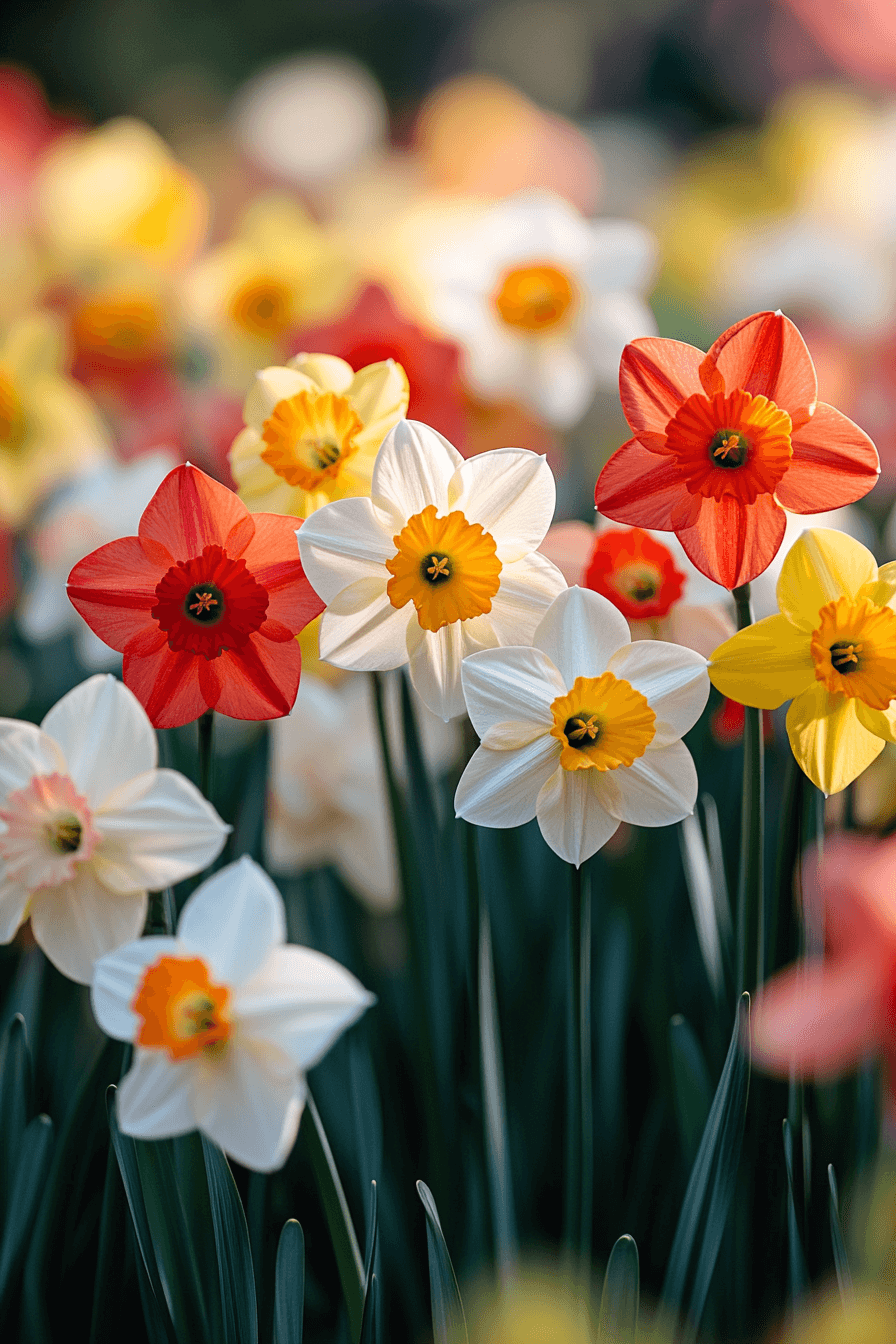
Key trait: Doesn’t fit other types.
Vibe: Freedom, innovation.
Favorites: Experimental hybrids
There’s something radical about blooms that don’t belong anywhere but here.
Care tip: Since hybrids vary widely, treat them as per their parentage; generally, full sun and well-drained soil work best.
🌱 13. Species & Wild Daffodils
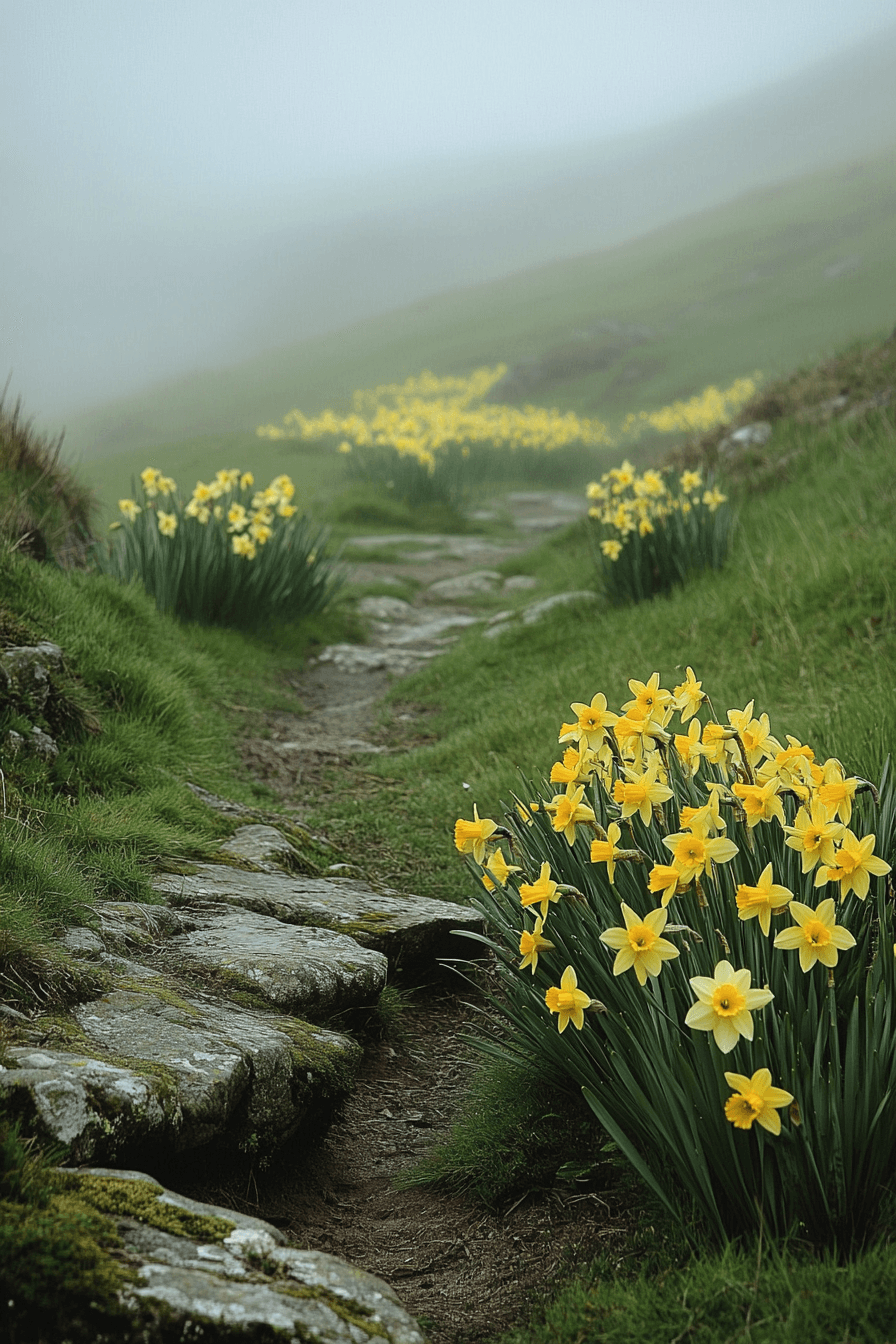
Key trait: Native and historic varieties.
Vibe: Ancestral memory.
Favorites: Narcissus pseudonarcissus, N. bulbocodium
I grow them near stones and pathways, where the past whispers.
Care tip: Ideal for naturalizing; plant in semi-shade or woodland edges with well-drained, humus-rich soil.
🌷 Daffodils & the Feminine Season of Becoming
Every daffodil is a mirror of becoming:
- The trumpet: voice
- The double: complexity
- The poeticus: intuition
- The jonquilla: sensuality
- The wild ones: memory
In planting them, we plant versions of ourselves. In blooming, they remind us how beautifully women return—again and again.
Want more slow gardening stories like this? Explore my gentle guide to lavender varieties →
Or take a poetic walk through classic rose types for soft-hearted rebels →
🌼 How to Grow Daffodils (Softly & Successfully)
- When to Plant: In early autumn, 2–4 weeks before the ground freezes.
- Where to Plant: Full sun to partial shade with well-drained soil.
- Depth: 3× bulb height; space 4–6 inches apart.
- Care: Leave leaves intact after flowering until they yellow—this feeds next year’s bloom.
- Tip: Overcrowded clumps? Lift and divide every 3–5 years.
❓ FAQ – Daffodil Wisdom for Curious Gardeners
Q: Are daffodils deer resistant?
Yes. Deer, squirrels, and rabbits typically avoid daffodils due to their toxicity.
Q: Are daffodil bulbs poisonous to pets?
Yes, especially the bulbs. Keep out of reach of dogs and cats.
Q: Can I grow daffodils in containers?
Absolutely. Compact types like ‘Tête-à-Tête’ and ‘Paperwhite’ are perfect for pots.
Q: Why didn’t my daffodils bloom this year?
Most common reasons: too little sun, overcrowding, or cutting foliage too early.
Q: How long do daffodils bloom?
Bloom time ranges from early to late spring depending on variety. A well-planned garden can have daffodils blooming for 6–8 weeks.
Q: What does the daffodil symbolize?
Renewal, feminine power, resilience, and the gentle strength of returning to oneself after darkness.
With muddy hands and moonlit hope,
Jojo Len
🌸 Keep Wandering Through the Garden
- A Gentle Guide to Lavender Varieties: Perfect Choices for Balcony, Aromatherapy & Garden Bliss
- Five Tender Sunflowers for Small Gardens & Big Feelings
- A Gentle Guide to 8 Classic Rose Varieties & Care Tips for Slow Living Gardeners
- A Gentle Guide to Cosmos: Three Varieties for Joyful, Wild Gardens
- Gentle Blossoms: A Zinnia Guide for Your Soulful Garden
- A Gentle Guide to Marigold Varieties
- A Gentle Guide to Petunia Varieties
- A Gentle Guide to Pansy Varieties: Faces of Resilience
- A Gentle Guide to Viola Varieties
- A Gentle Guide to Tulip Varieties
- A Gentle Guide to Crocus Varieties
👉 Explore more at jojolen.shop
- Pinterest: @GrowandGathertogether | Instagram: @jojolen6666
- Images © jojolen.shop — credit if shared. No commercial use without permission.
